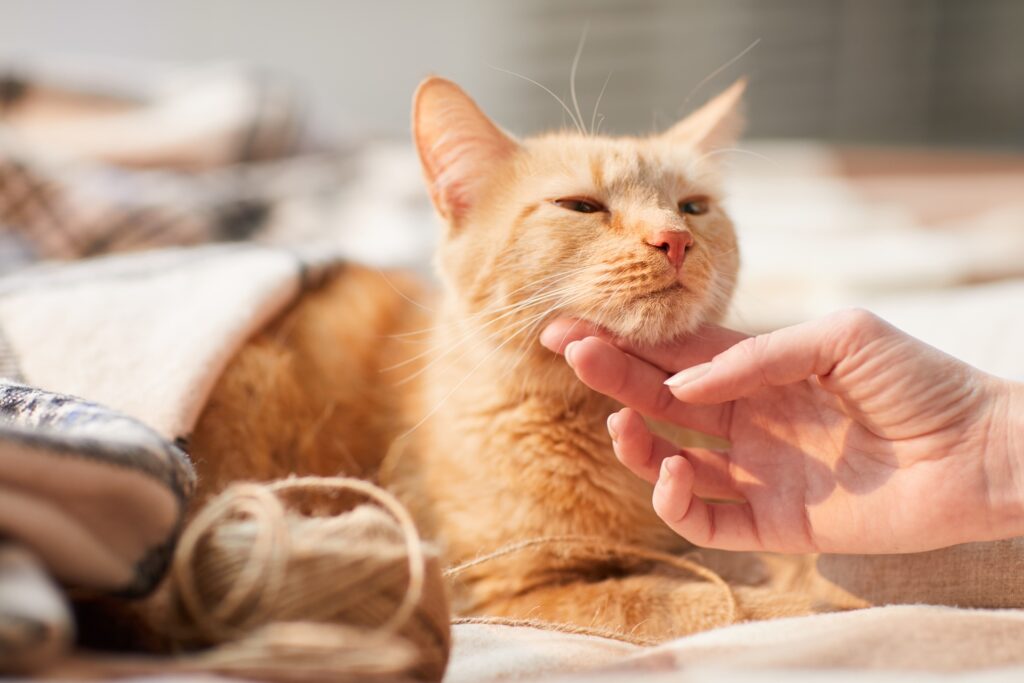Touch-Withdraw-Reward Training: A Guide to Aid Feline Socialisation and Husbandry
 Closeup of unrecognizable woman stroking ginger cat lovingly laying in bed while relaxing at home, scene lit by sunlight, copy space
Closeup of unrecognizable woman stroking ginger cat lovingly laying in bed while relaxing at home, scene lit by sunlight, copy spaceThis training should form part of a kitten’s socialisation programme but can be useful to habituate cats of any age. However, it is unsuitable for cats that have a particular sensitivity for being touched or for those who are extremely fearful of people. These individuals should be referred to a suitably qualified feline behaviourist through the correct channels.
The Benefits
- For carrying out basic husbandry tasks such as grooming, the administration of flea and worming treatments in the home.
- To prepare a cat for veterinary examinations.
Stages of Training
Stage One
- When the cat is alert and responsive to being around you, begin stroking them in the parts of the body they enjoy best. Then, very briefly touch them in a slightly different area, avoiding amber and red zones to begin with (for further information on areas that cat’s prefer to be touched see https://icatcare.org/unowned-cats/cat-friendly-homing/care-cat-friendly-interaction).
- Whilst the hand is touching that part of the body, use a verbal mark (‘Yes’ or ‘Good’) or a clicker but only if you and the cat are used to this method of training.
- Remove the hand and reward.
- It’s important to follow the described order of things because if the touch and reward are delivered at the same time, the cat will be completely distracted by the food and they won’t be learning much about the touch.
- Here’s the sequence:
- Touch the body
- Mark with your cue whilst the hand is touching the body
- Withdraw hand
- Reward
- It is important to both touch and withdraw the hand gently to avoid startling them.
Stage Two
- Progress gradually so that different areas of the body can be touched.
- Eventually you will be moving from ‘green zones’ to ‘amber’ zones and increasing the length of time an area is touched.
- Try to avoid working on sensitive areas of the body for long periods though. Always intersperse with touching areas that are less sensitive.
- Over time, the cat should become more comfortable being touched in different parts of the body.
Other Notes
Always remember that certain red zones can be strictly NO GO regions. For cats that object to certain locations being touched it is best to respect that and either get some professional training support or speak to a veterinarian about prescribing some calming medication to relax a cat that is going to need examining in those regions.